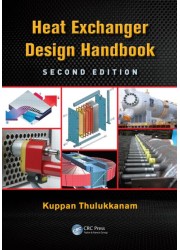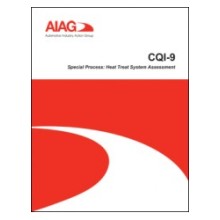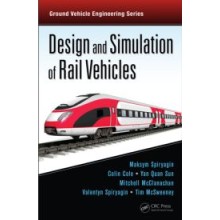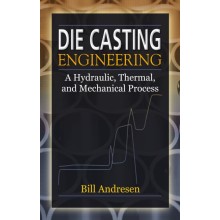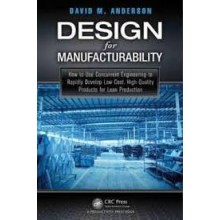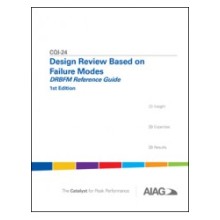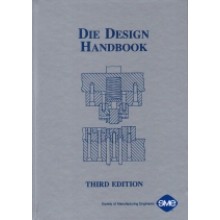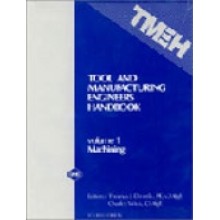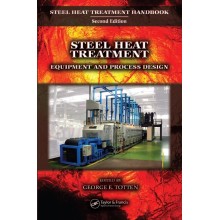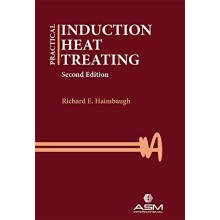Heat Exchanger Design Handbook 2nd Edition
Quantity:
-
Add to Compare
Completely revised and updated to reflect current advances in heat exchanger technology, Heat Exchanger Design Handbook, Second Edition includes enhanced figures and thermal effectiveness charts, tables, new chapter, and additional topics––all while keeping the qualities that made the first edition a centerpiece of information for practicing engineers, research, engineers, academicians, designers, and manufacturers involved in heat exchange between two or more fluids.
See What’s New in the Second Edition:
- Updated information on pressure vessel codes, manufacturer’s association standards
- A new chapter on heat exchanger installation, operation, and maintenance practices
- Classification chapter now includes coverage of scrapped surface-, graphite-, coil wound-, microscale-, and printed circuit heat exchangers
- Thorough revision of fabrication of shell and tube heat exchangers, heat transfer augmentation methods, fouling control concepts and inclusion of recent advances in PHEs
- New topics like EMbaffle®, Helixchanger®, and Twistedtube®heat exchanger, feedwater heater, steam surface condenser, rotary regenerators for HVAC applications, CAB brazing and cupro-braze radiators
Without proper heat exchanger design, efficiency of cooling/heating system of plants and machineries, industrial processes and energy system can be compromised, and energy wasted. This thoroughly revised handbook offers comprehensive coverage of single-phase heat exchangers—selection, thermal design, mechanical design, corrosion and fouling, FIV, material selection and their fabrication issues, fabrication of heat exchangers, operation, and maintenance of heat exchangers —all in one volume.
Table of Contents
Heat Exchangers: Introduction, Classification, and Selection
Introduction
Construction of Heat Exchangers
Classification of Heat Exchangers
Selection of Heat Exchangers
Requirements of Heat Exchangers
Heat Exchanger Thermohydraulic Fundamentals
Heat Exchanger Thermal Circuit and Overall Conductance Equation
Heat Exchanger Heat Transfer Analysis Methods
Thermal Effectiveness Charts
Symmetry Property and Flow Reversibility and Relation between the Thermal Effectiveness of Overall Parallel and Counterflow Heat Exchanger Geometries
Temperature Approach Meet, and Temperature Cross
Thermal Relation Formulas for Various Flow Arrangements and Pass Arrangements
Heat Exchanger Thermal Design
Fundamentals of Heat Exchanger Design Methodology
Design Procedure
Heat Exchanger Design Problems
Computer-Aided Thermal Design
Pressure-Drop Analysis, Temperature-Dependent Fluid Properties, Performance Failures, Flow Maldistribution, Fouling, and Corrosion
Cooperative Research Programs on Heat Exchanger Design
Uncertainties in Thermal Design of Heat Exchangers
Compact Heat Exchangers
Classification and Construction Details of Tube-Fin Compact Heat Exchangers
Plate-Fin Heat Exchangers
Surface Geometrical Relations
Factors Influencing Tube-Fin Heat Exchanger Performance
Thermohydraulic Fundamentals of Finned Tube Heat Exchangers
Correlations for j and f factors of Plate-Fin Heat Exchangers
Fin Efficiency
Rating of a Compact Exchanger
Sizing of a Compact Heat Exchanger
Effect of Longitudinal Heat Conduction on Thermal Effectiveness
Air-Cooled Heat Exchanger
Shell and Tube Heat Exchanger Design
Construction Details for Shell and Tube Exchangers
Tubes
Tube Arrangement
Baffles
Tubesheet and Its Connection with Shell and Channel
Tube Bundle
Shells
Pass Arrangement
Fluid Properties and Allocation
Classification of Shell and Tube Heat Exchangers
TEMA System for Describing Heat Exchanger Types
Differential Thermal Expansion
TEMA Classification of Heat Exchangers Based on Service Condition
Shell and Tube Heat Exchanger Selection
Shellside Clearances
Tube-to-Baffle-Hole Clearance
Shell-to-Baffle Clearance
Shell-to-Bundle Clearance
Bypass Lanes
Regenerators
Introduction
Heat Exchangers Used for Regeneration
Rotary Regenerative Air Preheater
Comparison of Recuperators and Regenerators
Considerations in Establishing a Heat Recovery System
Regenerator Construction Material
Thermal Design: Hydraulic Fundamentals
Thermal Design Theory
Mechanical Design
Industrial Regenerators and Heat Recovery Devices
Rotary Heat Exchangers for Space Heating
Plate Heat Exchangers and Spiral Plate Heat Exchangers
Plate Heat Exchanger Construction: General
Benefits Offered by Plate Heat Exchangers
Comparison between a Plate Heat Exchanger and a Shell and Tube Heat Exchanger
Plate Heat Exchanger: Detailed Construction Features
Brazed Plate Heat Exchanger
Other Forms of Plate Heat Exchangers
Thermohydraulic Fundamentals of Plate Heat Exchangers
PHE Thermal Design Methods
Corrosion of Plate Heat Exchangers
Fouling
Limitations of Plate Heat Exchangers
Spiral Plate Heat Exchangers
PLATECOIL® Prime Surface Plate Heat Exchangers
Heat Transfer Augmentation
Introduction
Application of Augmented Surfaces
Principle of Single-Phase Heat Transfer Enhancement
Approaches and Techniques for Heat Transfer Enhancement
Heat Transfer Mode
Passive Techniques
Active Techniques
Friction Factor
Pertinent Problems
Phase Change
Major Areas of Applications
Fouling
Effect of Fouling on the Thermohydraulic Performance of Heat Exchangers
Costs of Heat Exchanger Fouling
Fouling Curves/Modes of Fouling
Stages of Fouling
Fouling Model
Parameters That Influence Fouling Resistances
Mechanisms of Fouling
Fouling Data
How Fouling Is Dealt while Designing Heat Exchangers
TEMA Fouling Resistance Values
Fouling Monitoring
Expert System
Fouling Prevention and Control
Cleaning of Heat Exchangers
Foulant Control by Chemical Additives
Control of Fouling from Suspended Solids
Cooling-Water Management for Reduced Fouling
Flow-Induced Vibration of Shell and Tube Heat Exchangers
Principles of Flow-Induced Vibration
Discussion of Flow-Induced Vibration Mechanisms
Turbulence-Induced Excitation Mechanism
Fluid Elastic Instability
Acoustic Resonance
Vibration Evaluation Procedure
Design Guidelines for Vibration Prevention
Baffle Damage and Collision Damage
Empirical Checks for Vibration Severity
Impact and Fretting Wear
Determination of Hydrodynamic Mass, Natural Frequency, and Damping
Mechanical Design of Shell and Tube Heat Exchangers
Standards and Codes
Basics of Mechanical Design
Stress Analysis, Classes, and Categories of Stress
Tubesheet Design
Cylindrical Shell, End Closures, and Formed Heads under Internal Pressure
Bolted Flanged Joint Design
Expansion Joints
Opening and Nozzles
Supports
Corrosion
Basics of Corrosion
Forms of Corrosion
Corrosion of Weldments
Corrosion Prevention and Control
Corrosion Monitoring
Cooling-Water Corrosion
Material Selection for Hydrogen Sulfide Environments
Material Selection and Fabrication
Material Selection Principles
Equipment Design Features
Raw Material Forms Used in the Construction of Heat Exchangers
Materials for Heat Exchanger Construction
Plate Steels
Pipes and Tubes
Weldability Problems
Hot Cracking
Laboratory Tests to Determining Susceptibility to Cracking
Service-Oriented Cracking
Welding-Related Failures
Selection of Cast Iron and Carbon Steels
Low-Alloy Steels
Quenched and Tempered Steels
Chromium–Molybdenum Steels
Stainless Steels
Ferritic Stainless Steels
Duplex Stainless Steels
Superaustenitic Stainless Steels with Mo + N
Aluminum Alloys: Metallurgy
Copper
Nickel and Nickel-Base Alloys Metallurgy and Properties
Titanium: Properties and Metallurgy
Zirconium
Tantalum
Graphite, Glass, Teflon, and Ceramics
Graphite
Glass
Teflon
Ceramics
Hexoloy® Silicon Carbide Heat Exchanger Tube
Cladding
Postweld Heat Treatment of Welded Joints in Steel Pressure Vessels and Heat Exchangers
Quality Control and Quality Assurance, Inspection, and Nondestructive Testing
Quality Control and Quality Assurance
Inspection
Welding Design
Nondestructive Testing Methods
Heat Exchanger Fabrication
Introduction to Fabrication of the Shell and Tube Heat Exchanger
Details of Manufacturing Drawing
Stages of Heat Exchanger Fabrication
Forming of Heads and Closures
Brazing
Elements of Brazing
Fundamentals of Brazing Process Control
Brazing of Aluminum
Brazing of Heat-Resistant Alloys and Stainless Steel
Quality Control, Inspection, and NDT of Brazed Heat Exchangers
Soldering of Heat Exchangers
Corrosion of Brazed and Soldered Joints
Evaluation of Design and Materials of Automotive Radiators
CuproBraze Heat Exchanger
Heat Exchanger Installation, Operation, and Maintenance
Storage
Installation
Operation
Maintenance
Periodical inspection of Unit
Indications of Fouling
Deterioration of Heat Exchanger Performance
NDT Methods to Inspect and Assess the Condition of Heat Exchanger and Pressure Vessel Components
Residual Life Assessment of Heat Exchangers by NDT Techniques
Pressure Vessel Failure
Professional Service Providers for Heat Exchangers
References
Index
Write a review
Your Name:Your Review: Note: HTML is not translated!
Rating: Bad Good
Enter the code in the box below:
Copyright © 2014 Engineering Standards Bureau. All Rights Reserved.
Developed By Zoom Into Web


